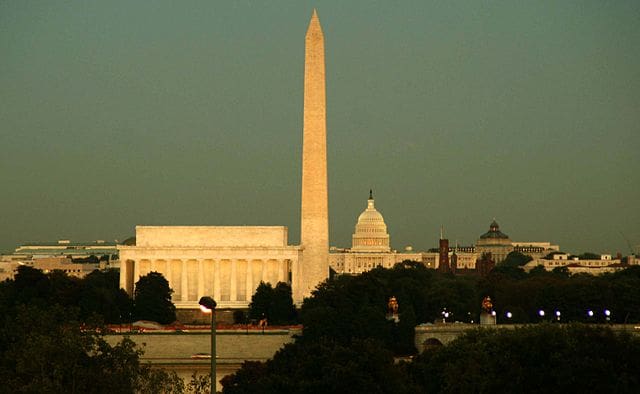55 Fascinating Facts About Washington DC
Washington D.C., located on the banks of the Potomac River, is a testament to the enduring spirit of American democracy. In addition to its iconic monuments and political powerhouses, this city has a rich tapestry of history, culture, and hidden gems that attract curious minds.
As the nation’s capital, it has witnessed the rise and fall of leaders, the birth of transformative policies, and the evolution of a nation. However, beneath the grandeur of the White House and the stoic presence of the Lincoln Memorial, Washington D.C. is teeming with captivating secrets and untold stories.
From its meticulously designed avenues to its vibrant neighborhoods, Washington D.C. has stories etched into every brick and cobblestone. Whether you are a history enthusiast, an art lover, or simply a traveler looking for something unexpected, Washington D.C. has treasures waiting to be discovered.
We explore the lesser-known aspects of this remarkable city, shedding light on the fascinating facts that make Washington D.C. a mosaic of intrigue, innovation, and inspiration.
1. It was founded on July 16, 1790

U.S. Air Force Tech. Sgt. Andy Dunaway, Public domain, via Wikimedia Commons
Washington D.C. was founded on July 16, 1790. The Residence Act of 1790, signed into law by President George Washington, established the location for the new capital of the United States on the Potomac River between the states of Maryland and Virginia.
The foundation of Washington D.C. marked a significant moment in American history as it became the symbol of a newly formed nation.
2. Washington D.C. is not a state but a federal district
Washington D.C. is not a state but a federal district. Established by the United States Constitution in Article I, Section 8, Clause 17, it serves as the nation’s capital and is under the direct jurisdiction of the federal government.
It was specifically created to be independent of any state to avoid favoring one state over another. Efforts to grant D.C. statehood have been ongoing, but it remains a federal district to this day.
3. It was named after the first president of the United States
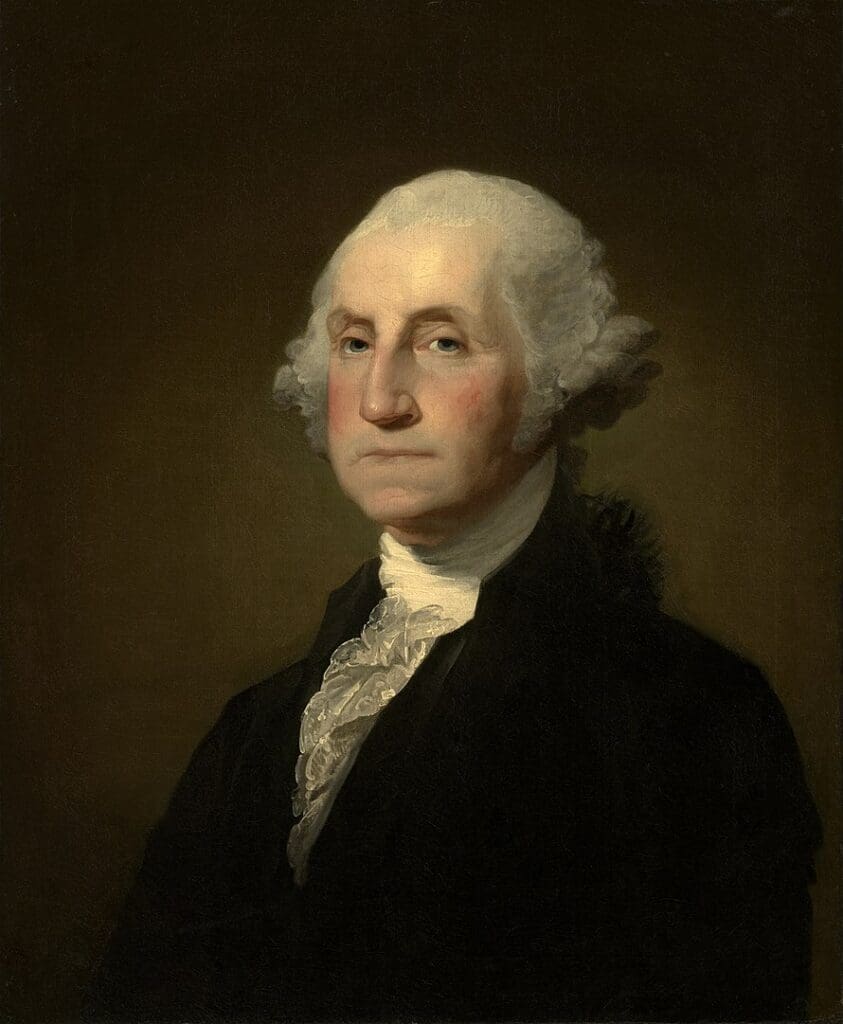
Gilbert Stuart, Public domain, via Wikimedia Commons
Washington D.C. was named after the first president of the United States, George Washington. The city’s name pays homage to President Washington’s pivotal role in the founding of the nation and his leadership during the American Revolutionary War.
The Residence Act of 1790, signed by President Washington, authorized the establishment of the new federal capital along the Potomac River, which was to be named in his honor. Thus, the city of Washington, located within the federal district, was officially named after the nation’s founding father and first president.
4. Washington D.C. is one of the few major world capitals named after a person
Washington D.C. is one of the few major world capitals named after a person. It was named in honor of George Washington, the first President of the United States and one of the Founding Fathers. This distinction sets it apart from many other global capitals that typically bear names related to geographic or historical features.
Washington’s name was chosen to symbolize the young nation’s unity and commemorate his pivotal role in its founding. As such, Washington D.C. stands as a unique capital, deeply connected to the ideals and history of the United States and its first leader.
5. The city’s layout was designed by Pierre Charles L’Enfant

See page for author, Public domain, via Wikimedia Commons
Washington, D.C. was designed by Pierre Charles L’Enfant, a French-born architect and city planner. George Washington appointed L’Enfant in 1791 to create a comprehensive plan for the new capital. L’Enfant’s design incorporated grand boulevards, radial avenues, and a central open space.
His vision for the city’s layout emphasized a sense of grandeur and symmetry, aligning with the ideals of the young nation. L’Enfant’s design remains integral to the city’s urban planning and aesthetics today.
6. Washington D.C. is home to numerous monuments and memorials
Washington D.C. is home to numerous monuments and memorials. The city is renowned for its rich collection of iconic national landmarks that pay tribute to American history, leaders, and significant events.
These include the Lincoln Memorial, the Jefferson Memorial, the Martin Luther King Jr. Memorial, the Vietnam Veterans Memorial, and the World War II Memorial, among many others.
These monuments and memorials not only serve as historical and cultural touchstones but also draw millions of visitors annually, offering a profound and immersive experience of the nation’s heritage and ideals.
7. It is home to the Washington Monument, an iconic obelisk, that stands 555 feet (169 meters) tall
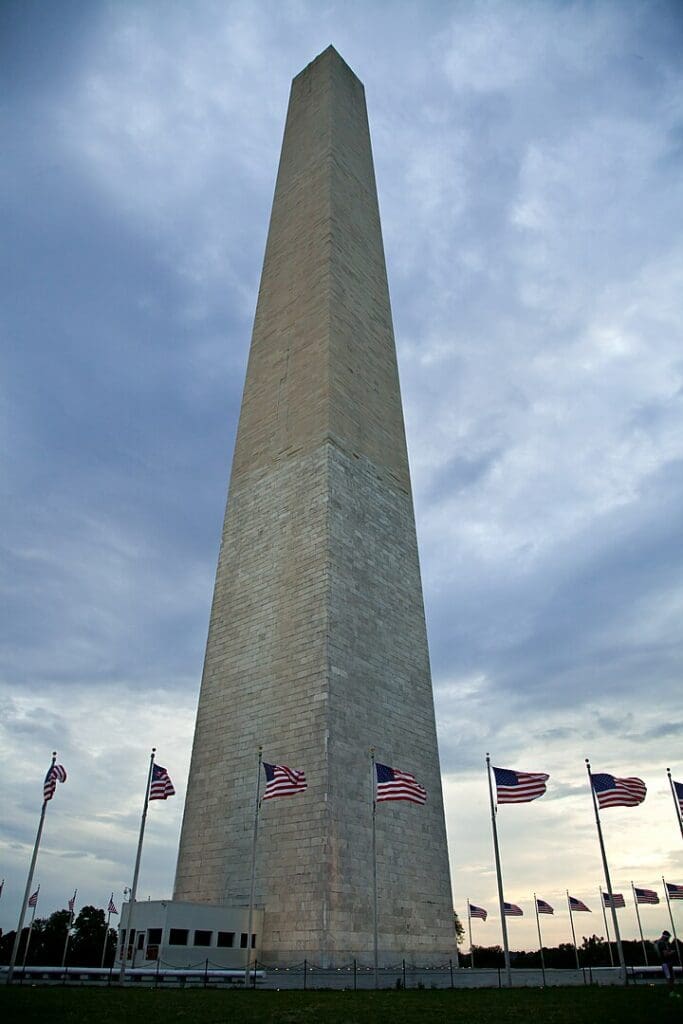
Almonroth, CC BY-SA 3.0, via Wikimedia Commons
Washington D.C. is home to the Washington Monument, an iconic obelisk that stands 555 feet (169 meters) tall. The Washington Monument is one of the most recognizable landmarks in the United States and serves as a tribute to the nation’s first president, George Washington.
It was completed in 1884 and is made of marble, granite, and bluestone gneiss. Visitors can take an elevator to the top for panoramic views of the city. The Washington Monument is a significant symbol of American history and is an integral part of the National Mall’s landscape.
8. D.C. has a rich history of African-American culture and played a significant role in the civil rights movement
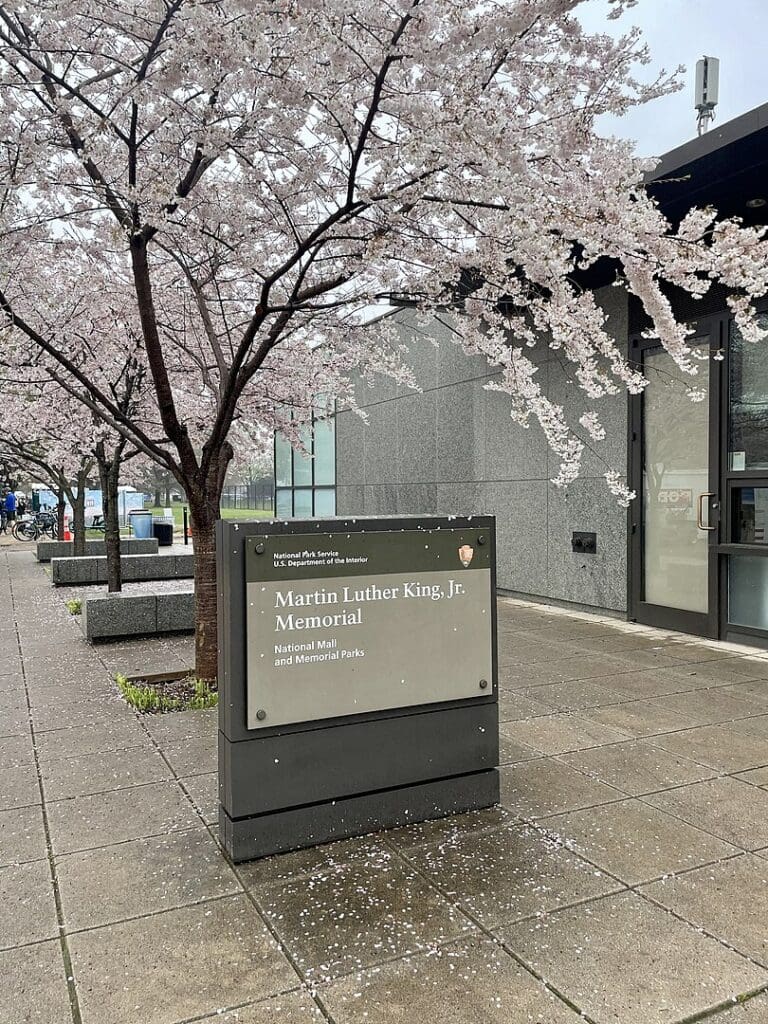
Genthelawlibrarian, CC BY-SA 4.0, via Wikimedia Commons
D.C. has a rich history of African-American culture and played a significant role in the civil rights movement. The city has been a hub for African-American history and culture for centuries, with landmarks like the African-American Civil War Memorial, the National Museum of African-American History and Culture, and the Martin Luther King Jr. Memorial.
Washington D.C. was also a central location for civil rights activism, hosting events such as the 1963 March on Washington for Jobs and Freedom, where Dr. Martin Luther King Jr. delivered his iconic “I Have a Dream” speech.
The city’s history reflects the struggle and progress of the African-American community in the United States.
9. It is bordered by Maryland to the northeast and Virginia to the southwest
Washington D.C. is bordered by Maryland to the northeast and Virginia to the southwest. The Potomac River forms a natural boundary between Washington D.C. and Virginia, while the border between Washington, D.C., and Maryland is defined by the Anacostia River and the Eastern Branch of the Potomac River.
Washington D.C.’s location on the Potomac River and its proximity to these neighboring states make it a strategically situated capital city in the United States.
10. D.C. covers an area of approximately 68.34 square miles (177.0 km²)
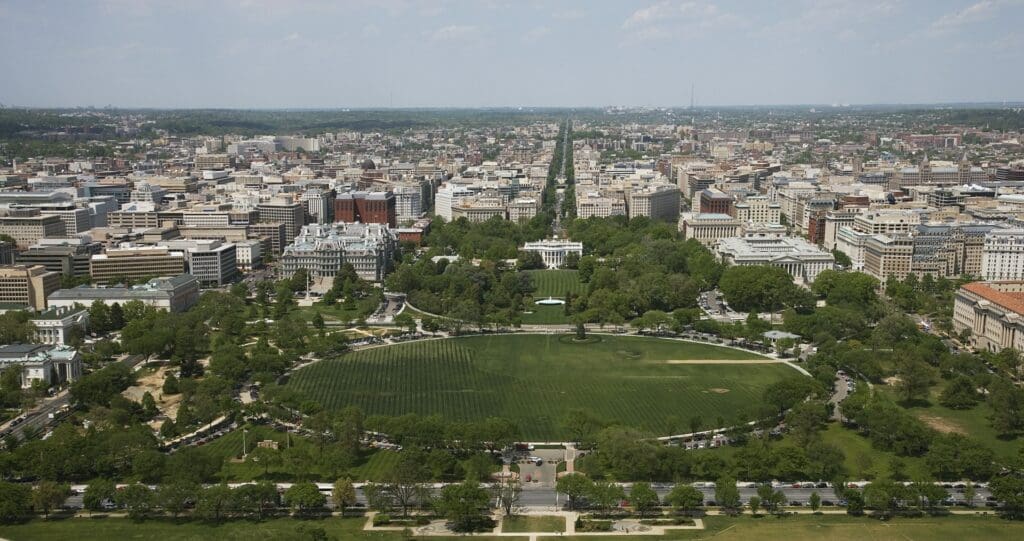
Carol M. Highsmith, Public domain, via Wikimedia Commons
Washington D.C. covers an area of approximately 68.34 square miles (177.0 km²). It is a relatively small geographical area compared to many other U.S. states and capitals, but its significance transcends its size as the nation’s capital. Within this compact area, D.C. houses numerous iconic landmarks, government institutions, cultural sites, and a diverse population.
Its manageable size allows residents and visitors to easily access its historical, political, and cultural attractions, making it a focal point for both American citizens and international tourists seeking a deeper understanding of the United States’ history and governance.
11. The city is the political and administrative center of the United States
Washington D.C. serves as the political and administrative center of the United States. It is the seat of the federal government. It houses the three branches of the U.S. government: the legislative branch (Congress), the executive branch (the White House and various federal agencies), and the judicial branch (the Supreme Court).
Washington D.C. is where the President of the United States resides, where Congress conducts its sessions, and where crucial governmental decisions are made. As the nation’s capital, it plays a pivotal role in the governance and administration of the United States.
12. Washington D.C. is the location of the U.S. Supreme Court, the highest court in the land
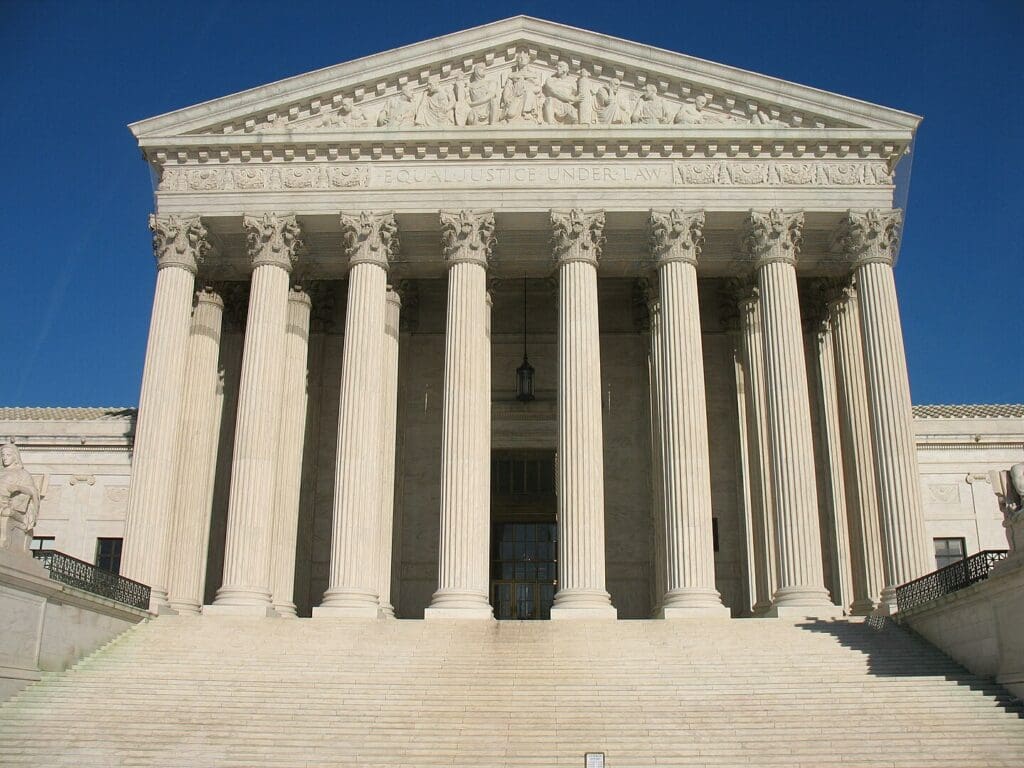
Photo by Mr Kjetil Ree., CC BY-SA 3.0, via Wikimedia Commons
Washington D.C. is the location of the U.S. Supreme Court, the highest court in the land. The Supreme Court of the United States is situated in the heart of the capital, adjacent to the United States Capitol and the White House.
As the ultimate judicial authority in the country, the Supreme Court plays a critical role in interpreting the U.S. Constitution and resolving legal disputes of national importance. Its decisions have far-reaching implications, shaping American law and policy.
The court’s presence in Washington D.C. underscores its central role in upholding the rule of law and the principles of the U.S. Constitution.
13. Washington D.C. is divided into four quadrants: Northwest (NW), Northeast (NE), Southwest (SW), and Southeast (SE)
Washington D.C. is divided into four quadrants: Northwest (NW), Northeast (NE), Southwest (SW), and Southeast (SE). This geographical division serves as a navigational reference for residents and visitors alike.
The Capitol Building and the White House, both pivotal symbols of American governance, are located in the northwest quadrant, while the U.S. Capitol building anchors the quadrants, with North Capitol Street and South Capitol Street forming the dividing lines.
The quadrant system makes it easier to locate specific addresses and provides a sense of orientation within the city’s gridded street layout, contributing to efficient navigation in the nation’s capital.
14. Washington D.C.’s street layout features diagonal avenues that intersect with a grid pattern
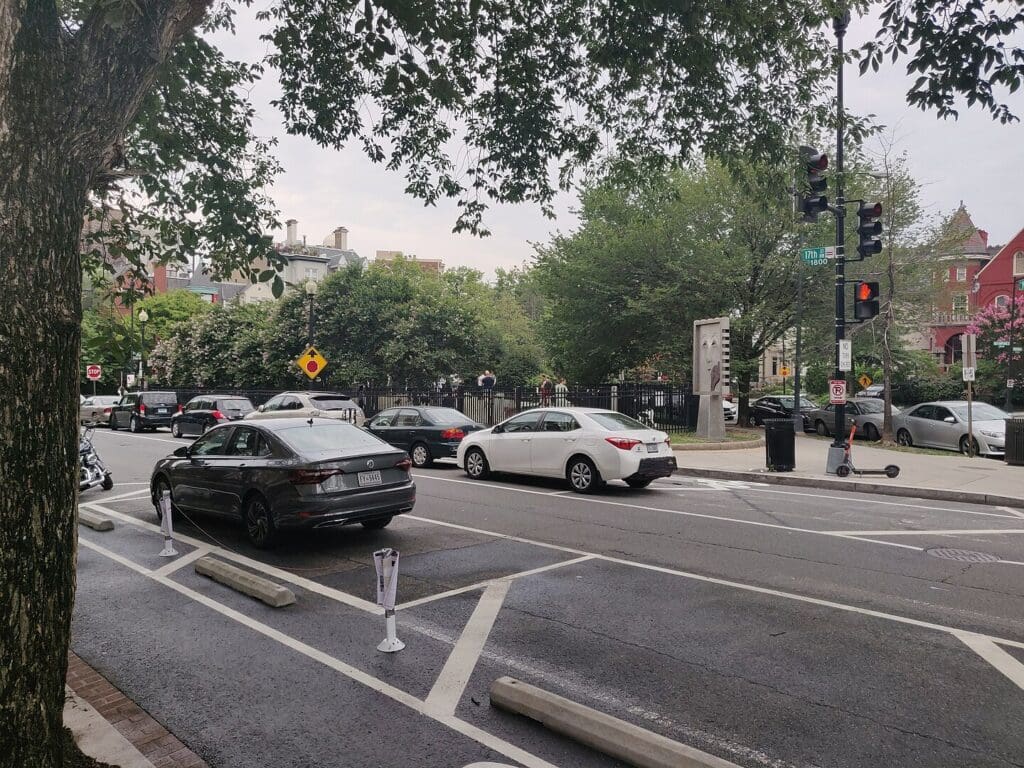
Kurt Kaiser, CC0, via Wikimedia Commons
D.C.’s street layout features diagonal avenues that intersect with a grid pattern, creating a unique and easily recognizable urban design.
The city’s layout, conceived by Pierre Charles L’Enfant in the late 18th century, incorporates a system of grand boulevards like Pennsylvania Avenue, which connects the U.S. Capitol and the White House, with radial avenues extending from key landmarks.
These diagonal avenues intersect with a grid of numbered and lettered streets, simplifying navigation and enhancing the aesthetics of the city. This distinctive layout contributes to the city’s character, making it both functional and visually appealing as the nation’s capital.
15. It has a height restriction on buildings to maintain its low skyline
Washington D.C. has a height restriction on buildings to maintain its low skyline. The Height of Buildings Act of 1910 limits the height of structures in the city to be no taller than the width of the adjacent street plus 20 feet.
This regulation preserves the city’s historic and aesthetically pleasing low-rise character, ensuring that iconic landmarks like the U.S. Capitol and the Washington Monument remain prominent and unobstructed by towering skyscrapers.
The height restriction reflects the city’s commitment to preserving its unique architectural and cultural heritage while also facilitating urban planning and development.
The height restriction has been controversial over the years, with some people arguing that it stifles development and prevents the city from growing and prospering. However, others argue that the restriction is necessary to protect the city’s unique character and heritage. Ultimately, the decision of whether or not to lift the height restriction is a political one that will need to be made by the city’s elected officials.
16. D.C. has more monuments dedicated to individuals than any other city in the world
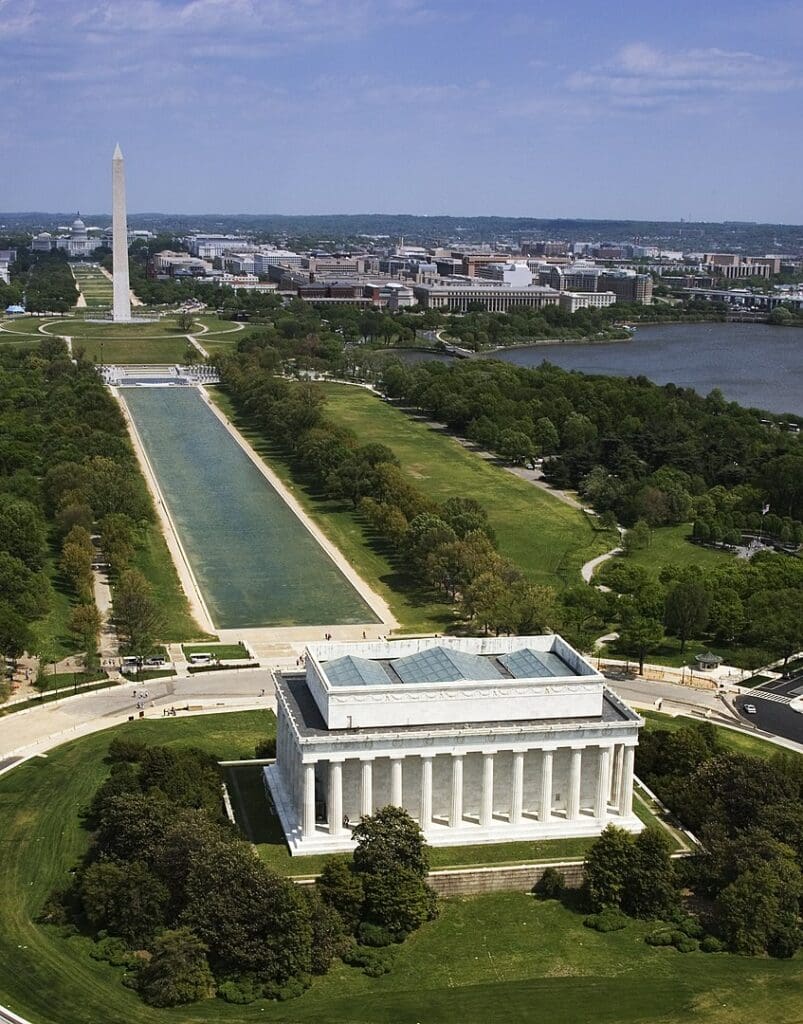
Carol M. Highsmith, Public domain, via Wikimedia Commons
Washington D.C. has more monuments dedicated to individuals than any other city in the world. The nation’s capital is adorned with a remarkable collection of monuments and memorials, paying tribute to American presidents, statesmen, civil rights leaders, military figures, and cultural icons.
These iconic statues and structures serve as a testament to the nation’s history and ideals, making Washington D.C. a global focal point for honoring significant individuals who have shaped America’s past and present.
The diversity and sheer number of these monuments make the city unparalleled in its dedication to commemorating individual contributions to society.
17. The city has its local government, including a mayor and city council
Washington, D.C. has its local government, including a mayor and city council. The city operates under a unique form of government known as a “mayor-council” system, which allows for self-governance but still falls under the ultimate authority of the United States Congress.
The Mayor of D.C. is the chief executive, responsible for local administration, while the D.C. Council, consisting of 13 members, serves as the legislative body. This local government manages various aspects of city life, such as education, transportation, public safety, and urban planning, providing essential services to D.C. residents while Congress retains oversight powers over federal matters in the district.
18. Washington D.C. residents have “Taxation Without Representation” license plates to protest their lack of voting representation in Congress
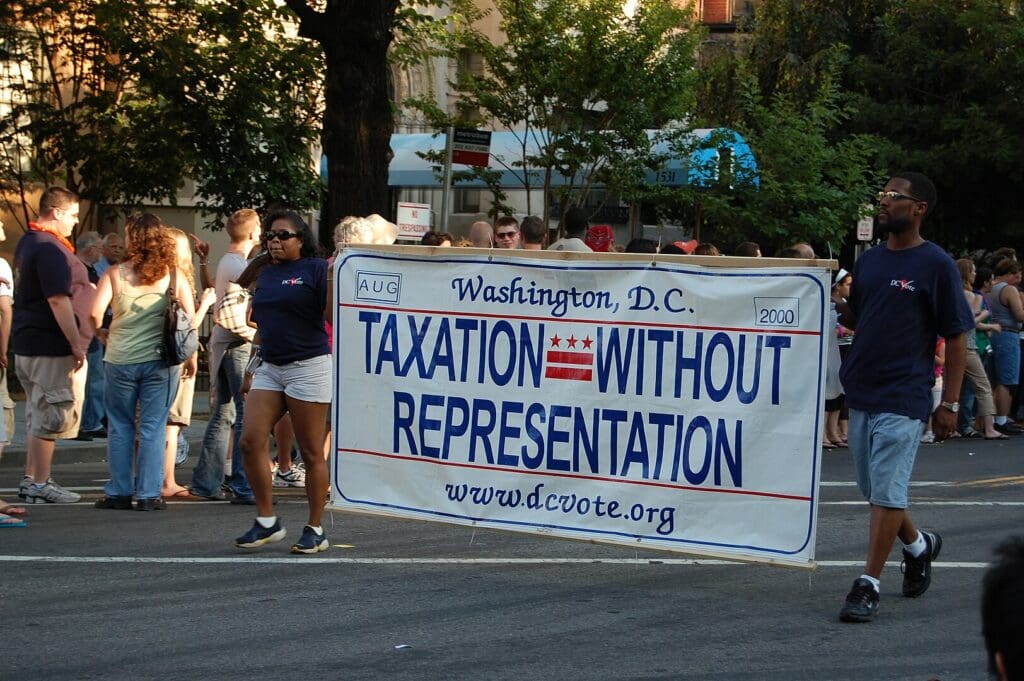
Alex Guerrero from Washington, DC, United States, CC BY 2.0, via Wikimedia Commons
Washington, D.C. residents have “Taxation Without Representation” license plates as a form of protest. These plates highlight the city’s unique political status: residents pay federal taxes, yet they lack full voting representation in Congress.
While D.C. has a non-voting delegate in the House of Representatives, they have no voting senators. The slogan on the license plates serves as a poignant reminder of the district’s ongoing struggle for statehood and full congressional representation, echoing the historic grievances that led to the American Revolution. It’s a symbol of the residents’ desire for equal rights and self-determination within the United States.
The plates have been controversial, with some people arguing that they are disrespectful to the flag. However, the plates remain a popular way for Washington, D.C. residents to express their political views.
19. D.C. is home to numerous theatres, galleries, and music venues
Washington D.C. is home to numerous theaters, galleries, and music venues. The city’s vibrant cultural scene offers a rich tapestry of artistic experiences. The John F. Kennedy Center for the Performing Arts hosts world-class theatre and music performances.
The Smithsonian Institution features renowned museums and galleries showcasing art, history, and culture. U Street, known as “Black Broadway,” boasts historic music venues.
The Arena Stage, Ford’s Theatre, and the Shakespeare Theatre Company are just a few of the many theatres presenting diverse theatrical productions. D.C.’s cultural offerings contribute to its dynamic and cosmopolitan atmosphere, attracting visitors from around the world.
20. The city is known for its annual Cherry Blossom Festival
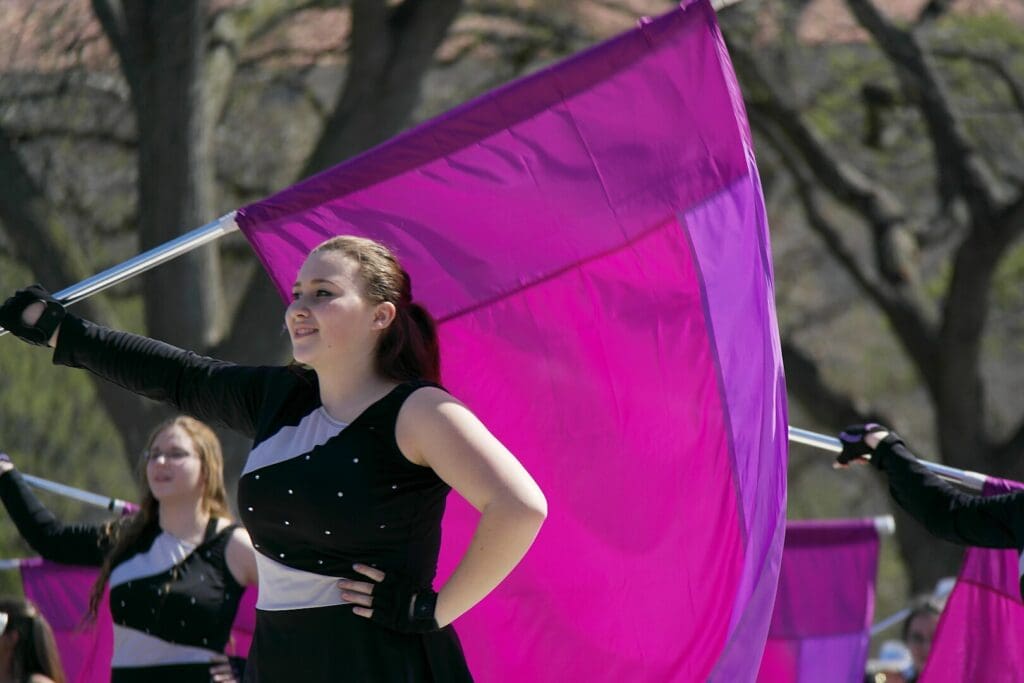
S Pakhrin from DC, USA, CC BY 2.0, via Wikimedia Commons
Washington, D.C. is known for its annual Cherry Blossom Festival. This iconic event celebrates the blooming of thousands of cherry blossom trees gifted to the United States by Japan in 1912.
Typically held in late March to early April, the festival features vibrant pink and white cherry blossoms adorning the Tidal Basin, creating a stunning natural spectacle. Visitors from around the world gather to enjoy cultural performances, parades, and the breathtaking beauty of the blossoms.
The festival symbolizes the enduring friendship between the United States and Japan and is a beloved springtime tradition in the nation’s capital.
21. Washington D.C. is a major center for research
Washington, D.C. is indeed a major center for research. It houses some of the world’s most renowned research institutions. Moreover, the city is home to numerous government agencies, think tanks, and policy research organizations, making it a political and social research hub.
D.C.’s proximity to the National Institutes of Health (NIH) and the Library of Congress further enhances its academic significance. The city’s rich cultural and historical heritage also contributes to its appeal as a center for learning and scholarship.
22. It is the location of the Smithsonian museums

Zack Frank, Smithsonian American Art Museum, CC BY-SA 3.0, via Wikimedia Commons
Washington, D.C. is the location of the Smithsonian museums. The Smithsonian Institution, established in 1846, is a world-renowned complex of museums and research centers.
Washington, D.C. hosts multiple Smithsonian museums, including the National Air and Space Museum, National Museum of American History, National Museum of Natural History, and many more.
These institutions house an extensive collection of art, history, science, and culture, making them a treasure trove of knowledge and a major tourist attraction. The Smithsonian museums play a pivotal role in preserving, showcasing, and disseminating the nation’s heritage and scientific advancements.
23. Washington D.C. is home to renowned universities such as Georgetown and George Washington University
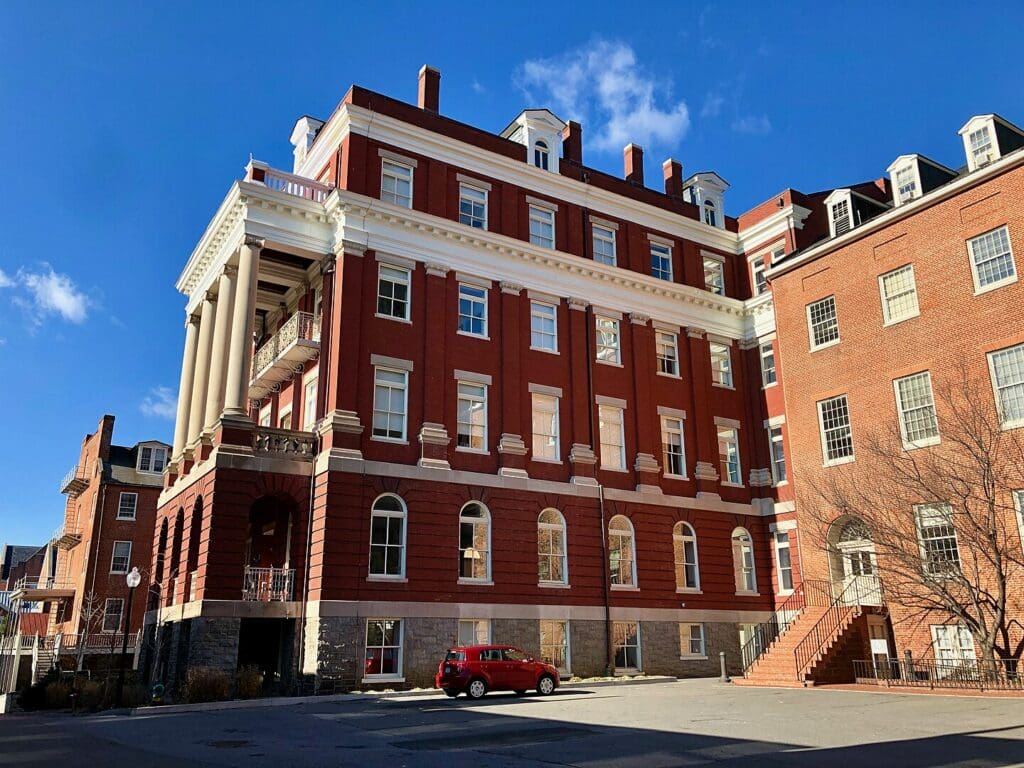
Warren LeMay from Cincinnati, OH, United States, CC0, via Wikimedia Commons
Washington, D.C. is home to renowned universities like Georgetown and George Washington University. Georgetown University, founded in 1789, is a prestigious institution known for its top-ranked programs in international relations, law, and business.
It has a rich history and a strong commitment to social justice. George Washington University, established in 1821, is another prominent research university in the city, excelling in fields like politics, public policy, and healthcare.
These institutions contribute significantly to the city’s academic and intellectual vibrancy, attracting students and faculty from around the world while playing pivotal roles in shaping national and global discourse.
24. D.C. has a public transportation system called the Washington Metro
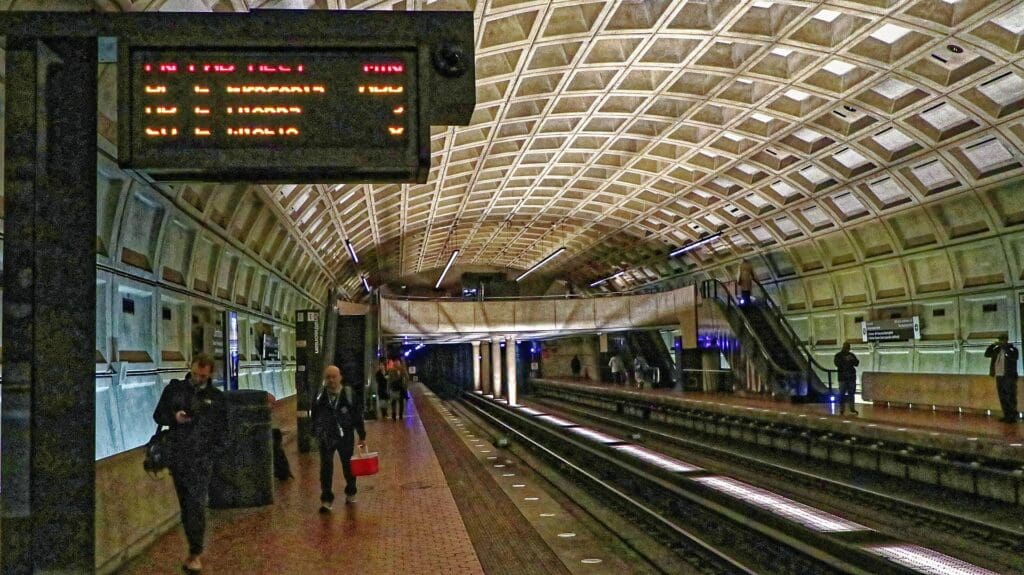
Burkhard Mücke, CC BY-SA 4.0, via Wikimedia Commons
Washington, D.C. has a public transportation system called the Washington Metro. The Washington Metro, commonly referred to as the Metro, is an extensive subway system serving the D.C. metropolitan area.
It consists of six lines, connecting the city with its suburbs in Maryland and Virginia. The Metro is a vital transportation network for residents and visitors, providing a convenient and efficient way to navigate the nation’s capital.
It plays a crucial role in reducing traffic congestion, promoting sustainability, and ensuring accessibility to various landmarks, government offices, and cultural attractions across the region.
The Washington Metro is a convenient and affordable way around Washington, D.C. It is a great option for tourists and residents alike.
25. It is served by three major airports
Washington, D.C. is served by three major airports. Ronald Reagan Washington National Airport (DCA) is the closest to the city centre, primarily handling domestic flights and offering convenient access to downtown D.C.
Dulles International Airport (IAD) is situated in Virginia and serves as a major international gateway, offering a wide range of global connections. Baltimore/Washington International Thurgood Marshall Airport (BWI), located in Maryland, is the third major airport serving the D.C. region and provides domestic and some international flights.
These airports collectively ensure that the D.C. metropolitan area is well-connected to destinations across the United States and around the world.
26. Washington D.C. is home to the FBI headquarters
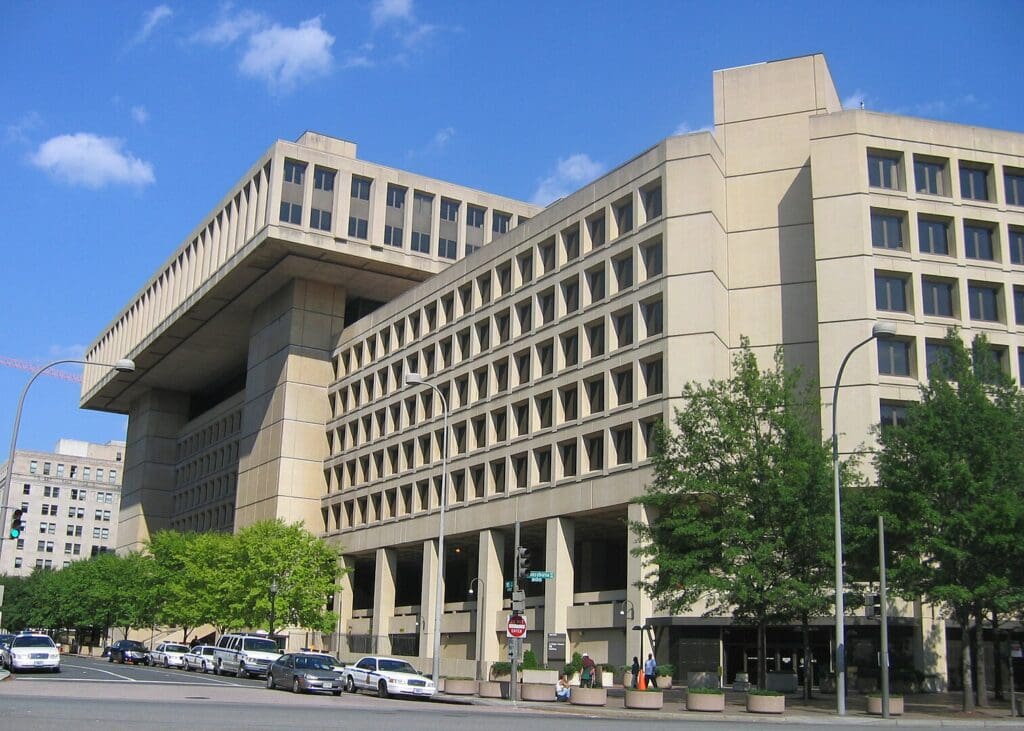
I, Aude, CC BY-SA 3.0, via Wikimedia Commons
Washington, D.C. is home to the headquarters of the Federal Bureau of Investigation (FBI). The J. Edgar Hoover Building, located in the heart of the city, has served as the main office for the FBI since its completion in 1975.
This iconic building houses the administrative and investigative functions of the FBI, playing a central role in the nation’s law enforcement and counterterrorism efforts.
It stands as a symbol of federal law enforcement and serves as a hub for crucial intelligence, investigations, and operations conducted by the FBI throughout the United States and abroad.
27. The city is known for its annual National Independence Day Parade and fireworks on July 4th
Washington, D.C. is known for its annual National Independence Day Parade and fireworks on July 4th. The Fourth of July celebrations in the nation’s capital are among the most iconic in the United States.
The National Independence Day Parade features colorful floats, marching bands, and patriotic displays along Constitution Avenue, commemorating the country’s independence.
In the evening, a grand fireworks display lights up the sky over the National Mall, with the Washington Monument and U.S. Capitol as stunning backdrops. These events draw large crowds of locals and visitors, making D.C. a popular destination to celebrate America’s Independence Day.
28. Washington D.C. hosts the Marine Corps Marathon, one of the largest marathons in the United States
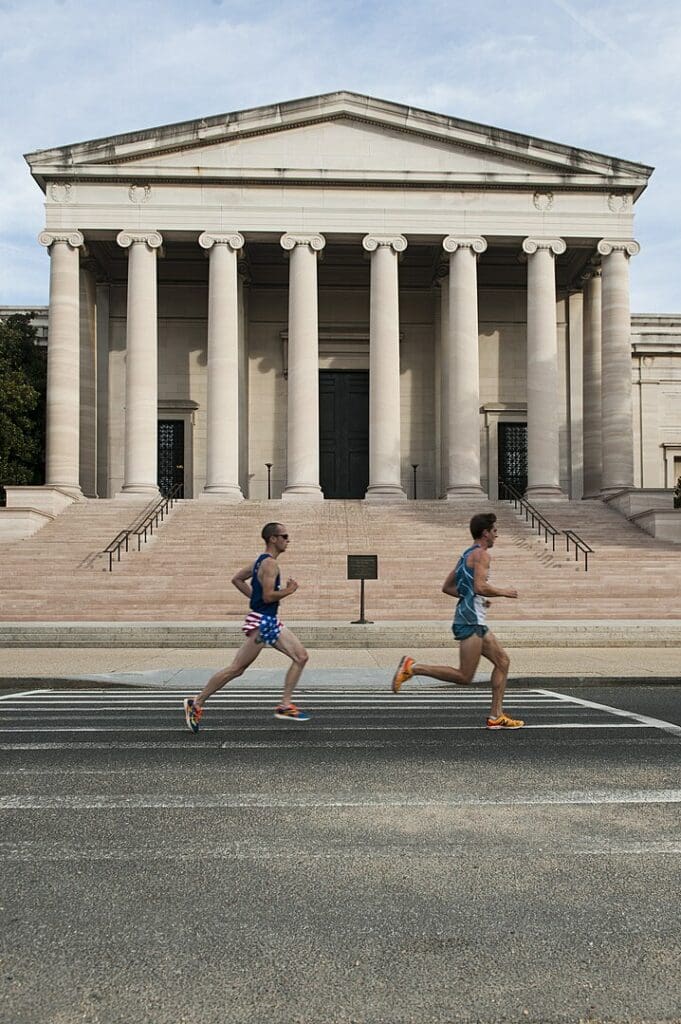
Lance Cpl. Yasmin Perez, Public domain, via Wikimedia Commons
Washington, D.C. hosts the Marine Corps Marathon, one of the largest marathons in the United States. The Marine Corps Marathon, often referred to as “The People’s Marathon,” typically takes place in October.
It is renowned for its scenic course that winds through the nation’s capital, passing iconic landmarks like the Washington Monument and the Pentagon. The event also includes the MCM10K, attracting thousands of participants and spectators.
Beyond its athletic significance, the marathon holds a special place in the military community, with many runners and volunteers representing the armed forces. It’s a patriotic and community-focused event that showcases the spirit of D.C.
29. D.C. is known for its vibrant LGBTQ+ community and events like Capital Pride
Washington, D.C. is known for its vibrant LGBTQ+ community and events like Capital Pride. The city has a thriving LGBTQ+ scene, with numerous bars, clubs, and organizations that foster inclusivity and acceptance.
Capital Pride, held annually in June during Pride Month, is a prominent celebration featuring a colorful parade, street festivals, and various cultural events. It brings together diverse communities and allies to promote LGBTQ+ rights, equality, and visibility.
Washington, D.C. is also home to advocacy groups like the Human Rights Campaign, further emphasizing its role as a hub for LGBTQ+ activism and a welcoming destination for all.
30. The city has a thriving food truck scene
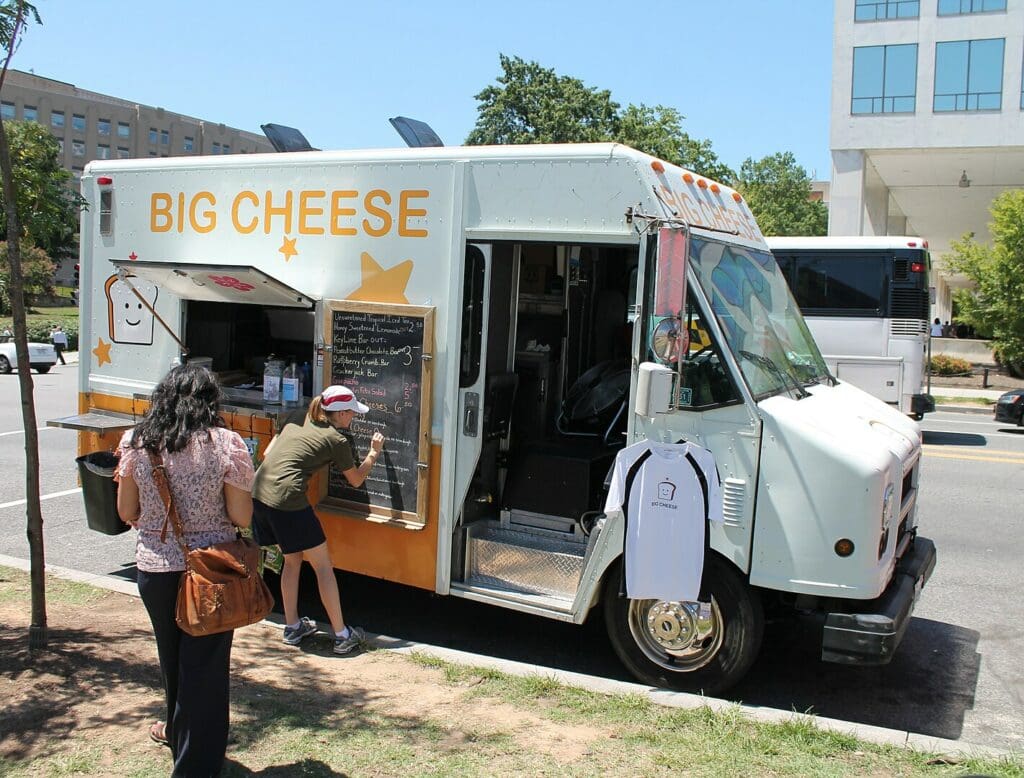
Elvert Barnes, CC BY-SA 2.0, via Wikimedia Commons
Washington, D.C. has a thriving food truck scene. The city’s food truck culture has experienced significant growth in recent years, offering a diverse array of culinary delights. These mobile vendors serve everything from gourmet burgers and tacos to international cuisines and artisanal desserts.
They can be found throughout the city, providing convenient and often affordable dining options for residents, tourists, and office workers. D.C.’s food trucks contribute to the city’s vibrant culinary landscape, adding variety and creativity to its dining scene, and they are a popular choice for those seeking delicious meals on the go.
While savoring delectable dishes from food trucks, elevate your culinary experience in Washington D.C.
Click here to explore the city’s finest restaurants. Indulge in a gastronomic journey through flavors that define the capital’s vibrant and diverse dining scene. Elevate your palate to new heights.
31. It is known for its annual National Christmas Tree Lighting Ceremony

The White House from Washington, DC, Public domain, via Wikimedia Commons
Washington, D.C. is known for its annual National Christmas Tree Lighting Ceremony. This cherished tradition dates back to 1923 when President Calvin Coolidge lit the first National Christmas Tree on the White House grounds.
Today, it’s a nationally televised event held in early December, where the President, joined by thousands of spectators, illuminates the beautifully decorated National Christmas Tree, usually a towering evergreen.
The ceremony includes musical performances, celebrity guests, and a festive atmosphere, marking the official start of the holiday season in the nation’s capital. It’s a symbol of unity, celebration, and holiday spirit in Washington, D.C.
32. Washington D.C. has a vibrant fashion and design scene
Washington, D.C. has a vibrant fashion and design scene. While not as internationally renowned as fashion capitals like New York or Paris, D.C. boasts a growing community of fashion designers, boutiques, and trendsetters.
The city hosts events like the DC Fashion Week and the Washington Vintage Fashion Expo, showcasing local talent and the latest trends. Additionally, D.C.’s museums and galleries often feature exhibitions highlighting the intersection of fashion and design.
With its diverse and cosmopolitan population, the nation’s capital fosters a unique blend of style, from classic elegance influenced by politics to avant-garde creativity found in its emerging design hubs.
33. The city is rich in historic neighborhoods, each with its unique character
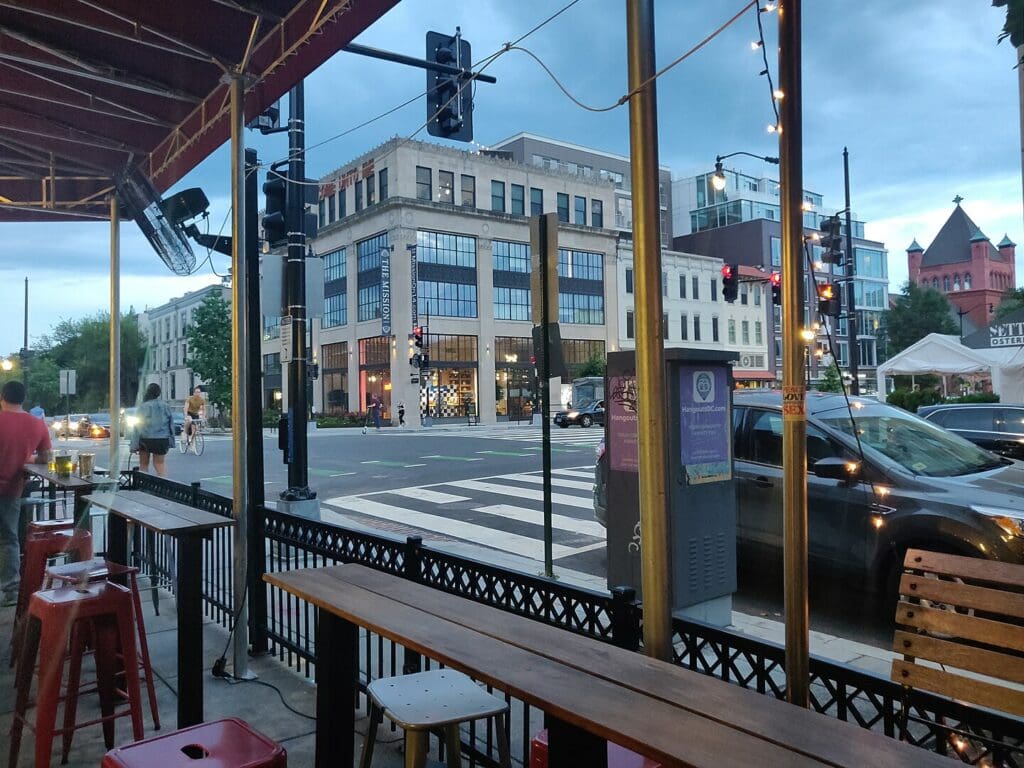
Kurt Kaiser, CC0, via Wikimedia Commons
The city’s diverse and storied past is reflected in its various neighborhoods , such as Georgetown, known for its cobblestone streets and histric architecture; Capitol Hill, home to the U.S. Capitol and charming row houses; and Adams Morgan, celebrated for its cultural diversity and nightlife.
The historic neighbourhoods of D.C. offer a tapestry of architectural styles, cultural influences, and community traditions, making each area a distinct and vibrant part of the city’s identity. These neighborhoods collectively contribute to D.C.’s rich tapestry of history and culture.
34. Washington D.C. has a vibrant jazz history
The city played a pivotal role in the evolution of jazz music in the 20th century. U Street, known as “Black Broadway,” was a thriving hub for jazz and African-American culture during the Harlem Renaissance.
Legendary artists like Duke Ellington and Cab Calloway performed here. D.C. was also a hotspot for jazz during the era of segregation, with numerous jazz clubs and theatres showcasing remarkable talent.
Today, the city continues to celebrate its jazz heritage through festivals, venues, and cultural events, ensuring that jazz remains an integral part of its artistic and musical legacy.
35. D.C. is known for its blooming magnolia trees, adding to the city’s natural beauty
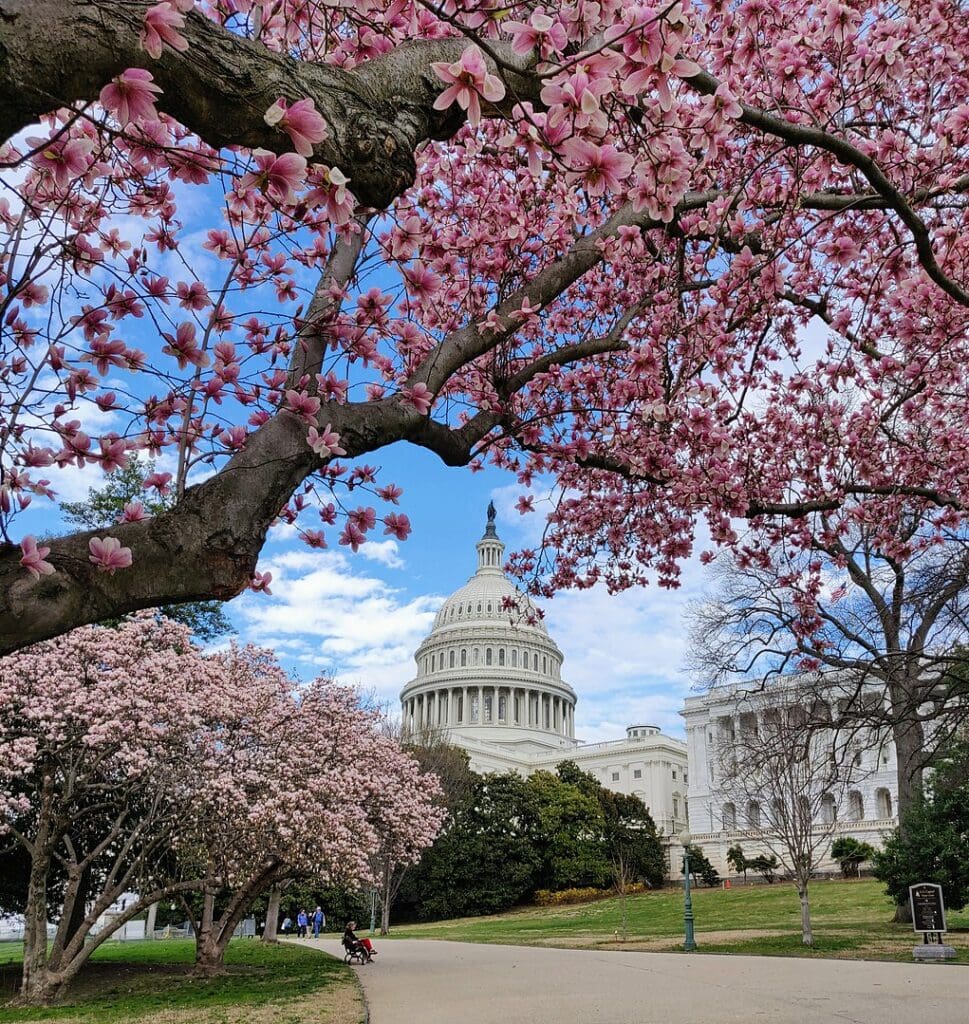
Sdkb, CC BY-SA 4.0, via Wikimedia Commons
Washington, D.C. is known for its blooming magnolia trees, which add to the city’s natural beauty. These majestic trees, with their large, fragrant blossoms, are iconic symbols of the city’s charm and elegance.
The National Mall and many public parks are adorned with beautiful magnolia blooms each spring, creating picturesque landscapes that attract both locals and tourists.
These trees not only enhance the aesthetics of the city but also symbolize the renewal and vitality of nature in the heart of the nation’s capital, making them an integral part of D.C.’s natural and cultural heritage.
36. The city’s annual Funk Parade celebrates the vibrant music culture of D.C
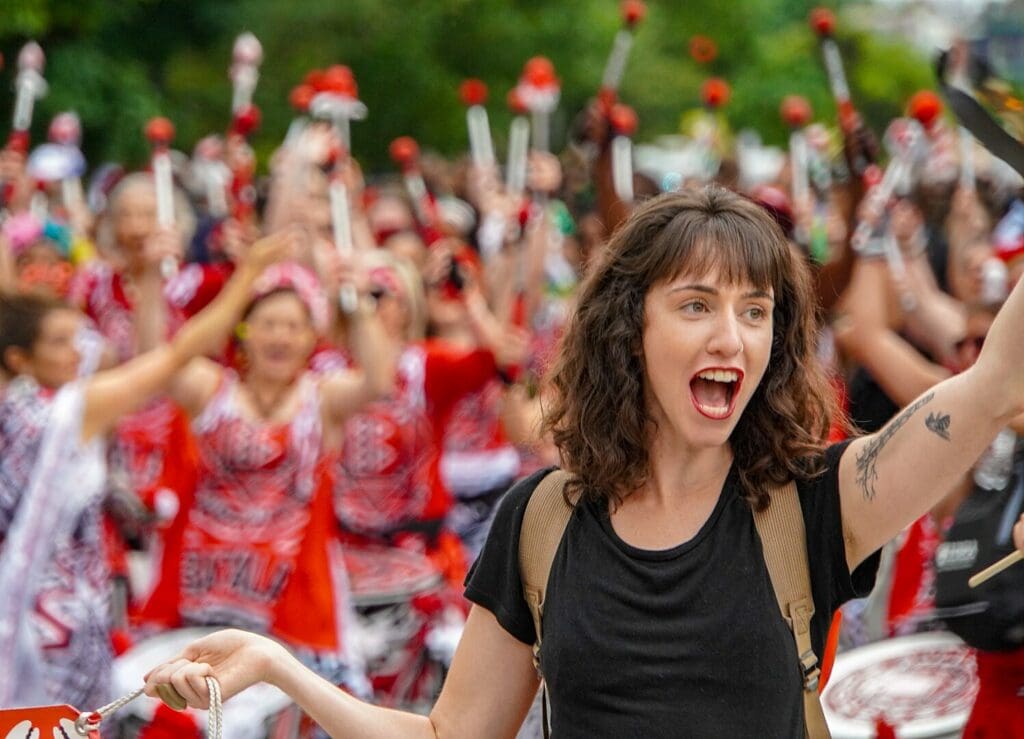
Ted Eytan, CC BY-SA 2.0, via Wikimedia Commons
Washington, D.C. hosts an annual Funk Parade that celebrates the vibrant music culture of the city. The Funk Parade is a lively and colorful event held each spring, featuring music, dance, and art performances that pay homage to the rich musical heritage of D.C.
It celebrates funk, soul, and go-go music, genres deeply intertwined with the city’s history. The parade, which includes marching bands, dance troupes, and local musicians, brings together residents and visitors to groove to the rhythm of D.C.’s unique musical traditions, fostering a sense of community and celebrating the city’s cultural diversity.
The Funk Parade was founded in 2013 by a group of musicians and community organizers who wanted to create a space for people to come together and celebrate the music of Washington, D.C. The parade has since grown into a major event, attracting thousands of people each year.
The Funk Parade is a free event and is open to everyone. It is a great way to experience the unique music culture of Washington, D.C., and to meet people from all walks of life.
If you are in Washington, D.C. in the spring, be sure to check out the Funk Parade. It is a truly unforgettable experience.
37. It is known for its springtime bloom of azaleas, adding colorful beauty to the city’s parks and gardens
Washington, D.C. is famous for its azalea blooms in the spring, which brighten the city’s parks and gardens. During the spring season, the National Arboretum and the National Mall, in particular, transform into beautiful displays of these rich, flowering shrubs.
The annual National Cherry Blossom Festival, which commemorates Japan’s gift of cherry trees, also includes spectacular azalea displays. These vibrant blossoms provide a stunning backdrop for both tourists and residents, attracting throngs to admire their beauty.
The azaleas provide color and energy to the city’s surroundings, contributing to D.C.’s attraction as a destination for outdoor enthusiasts and nature lovers.
38. Washington D.C. is home to several major sports teams
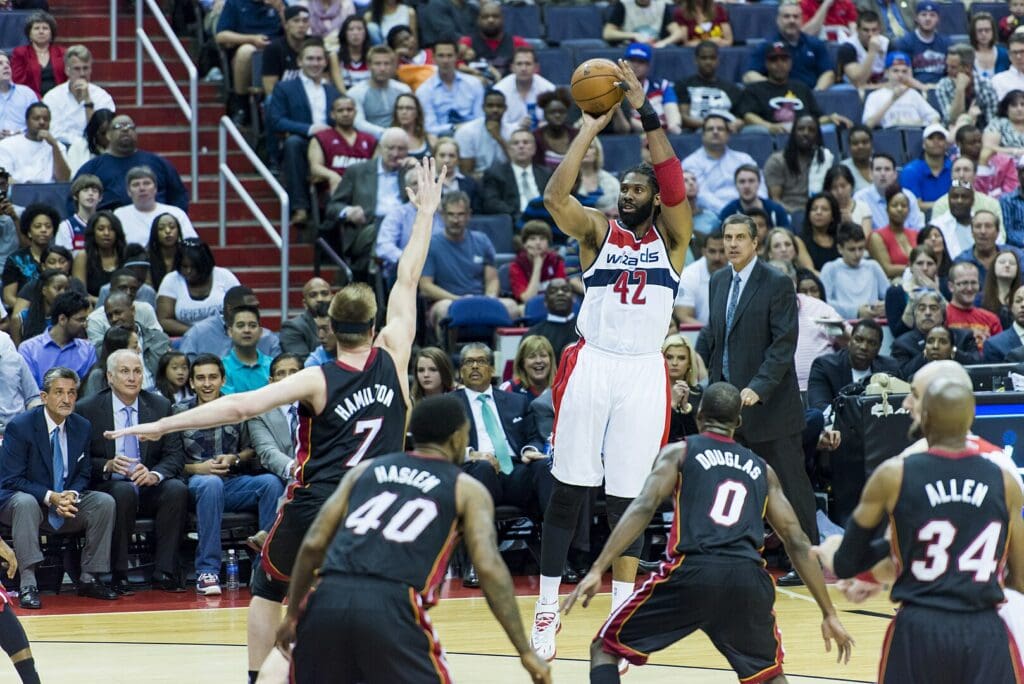
Chensiyuan, CC BY-SA 3.0, via Wikimedia Commons
Washington, D.C. is home to several major sports teams. The city boasts professional teams representing various sports, including the Washington Football Team (NFL), Washington Nationals (MLB), Washington Wizards (NBA), and Washington Capitals (NHL).
These franchises have passionate fan bases and contribute to the city’s sports culture. Additionally, D.C. hosts various collegiate and minor league teams, showcasing a diverse array of athletic talent.
The city’s sports venues, such as FedExField, Nationals Park, and Capital One Arena, serve as hubs for sports entertainment and provide opportunities for residents and visitors to enjoy live sporting events throughout the year.
39. It has a rich literary history, with many famous authors, poets, and journalists calling the city home
Washington, D.C. has a rich literary history, with numerous famous authors, poets, and journalists calling the city home. Over the years, the nation’s capital has been a hub for intellectual and literary activity, with prominent figures like Langston Hughes, Zora Neale Hurston, and F. Scott Fitzgerald residing in the city at various points in their careers.
The city’s vibrant political and cultural scene has often inspired writers and journalists, leading to the creation of influential works of literature and journalism. Today, D.C. continues to be a thriving center for writers and literary events, fostering a legacy of literary excellence.
40. The city’s water features, including the Potomac River and the Tidal Basin, provide opportunities for boating, paddle boarding, and relaxation
![Potomac River,] Washington, D.C](https://www.discoverwalks.com/blog/wp-content/uploads/2023/09/lossy-page1-1392px-potomac_river_washington_d.c_lccn2011631172.tif-1024x794.jpg)
Carol M. Highsmith, Public domain, via Wikimedia Commons
Washington, D.C.’s water features, including the Potomac River and the Tidal Basin, provide opportunities for boating, paddleboarding, and relaxation. The Potomac River offers various recreational activities such as kayaking, canoeing, and paddleboarding, allowing residents and visitors to enjoy the scenic waterfront.
The Tidal Basin, surrounded by iconic cherry blossoms, is a popular spot for paddle boating during the spring season. Both locations offer opportunities for leisurely walks, picnics, and relaxation by the water, providing a serene contrast to the bustling city.
These natural amenities enhance the overall quality of life in the nation’s capital and encourage outdoor recreation.
41. Washington D.C. is home to the Martin Luther King Jr. Memorial Library

Genthelawlibrarian, CC BY-SA 4.0, via Wikimedia Commons
Washington, D.C. is home to the Martin Luther King Jr. Memorial Library. This historic library, named in honor of civil rights leader Martin Luther King Jr., is the central library of the District of Columbia Public Library system.
Designed by architect Ludwig Mies van der Rohe, it has served as a focal point for education and community engagement since its opening in 1972.
Renovated and modernized in recent years, the library continues to be a vital resource for D.C. residents, offering a wide range of services, collections, and cultural programs while honoring the legacy of Dr. Martin Luther King Jr.
42. Washington D.C. has an extensive system of underground tunnels connecting many government buildings
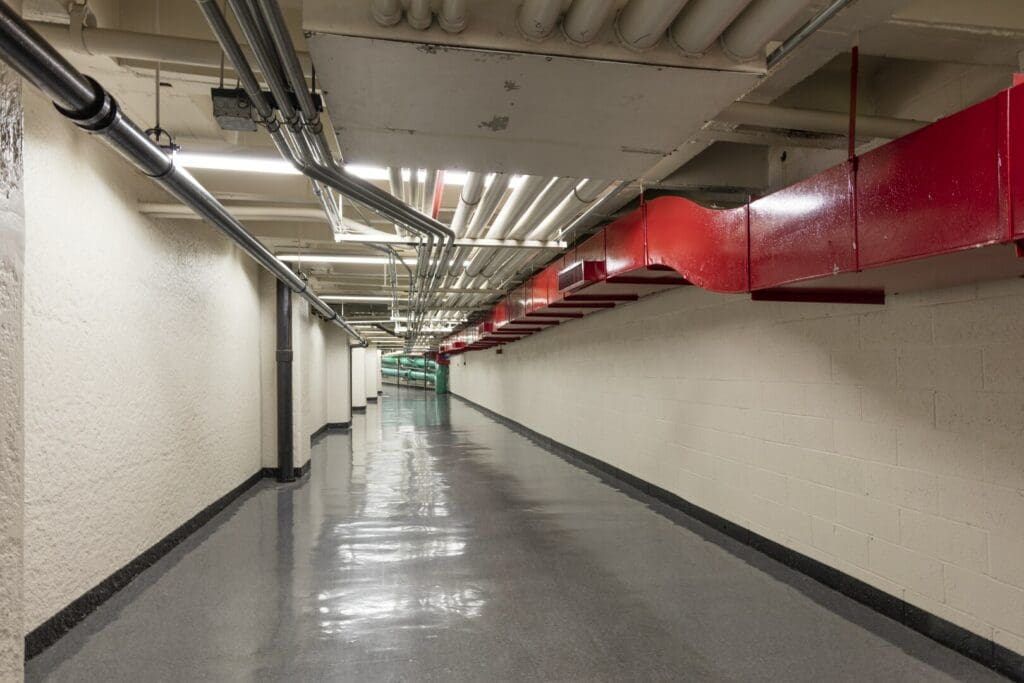
Carol M. Highsmith, Public domain, via Wikimedia Commons
Washington, D.C. has an extensive system of underground tunnels connecting many government buildings. This network of tunnels, often referred to as the “D.C. Underground,” serves various purposes.
It allows government officials, staff, and security personnel to move between buildings discreetly and efficiently, especially during inclement weather or security situations. These tunnels also house utility infrastructure, such as power lines and communication cables.
Additionally, some tunnels feature shops, food courts, and services for the convenience of workers. While not a secret, the extent and purpose of these tunnels have led to intrigue and speculation among the public.
43. It has one of the highest concentrations of lawyers per capita in the United States
Washington, D.C. has one of the highest concentrations of lawyers per capita in the United States. The city is home to numerous law firms, government agencies, advocacy groups, and international organizations, making it a major legal and policy hub.
The presence of the federal government, along with the need for legal expertise in areas such as politics, international relations, and regulation, has contributed to the significant number of lawyers in the D.C. metropolitan area. As a result, it has a high lawyer-to-resident ratio compared to other U.S. cities.
The federal government is the largest employer in the city, and it needs a large number of lawyers to help it carry out its many functions. In addition, the city is home to many law firms, advocacy groups, and international organizations, which also require the services of lawyers.
As a result, Washington, D.C. has a much higher lawyer-to-resident ratio than most other U.S. cities.
44. The city’s location along the Potomac River was chosen in part because it would be less susceptible to attack from the sea
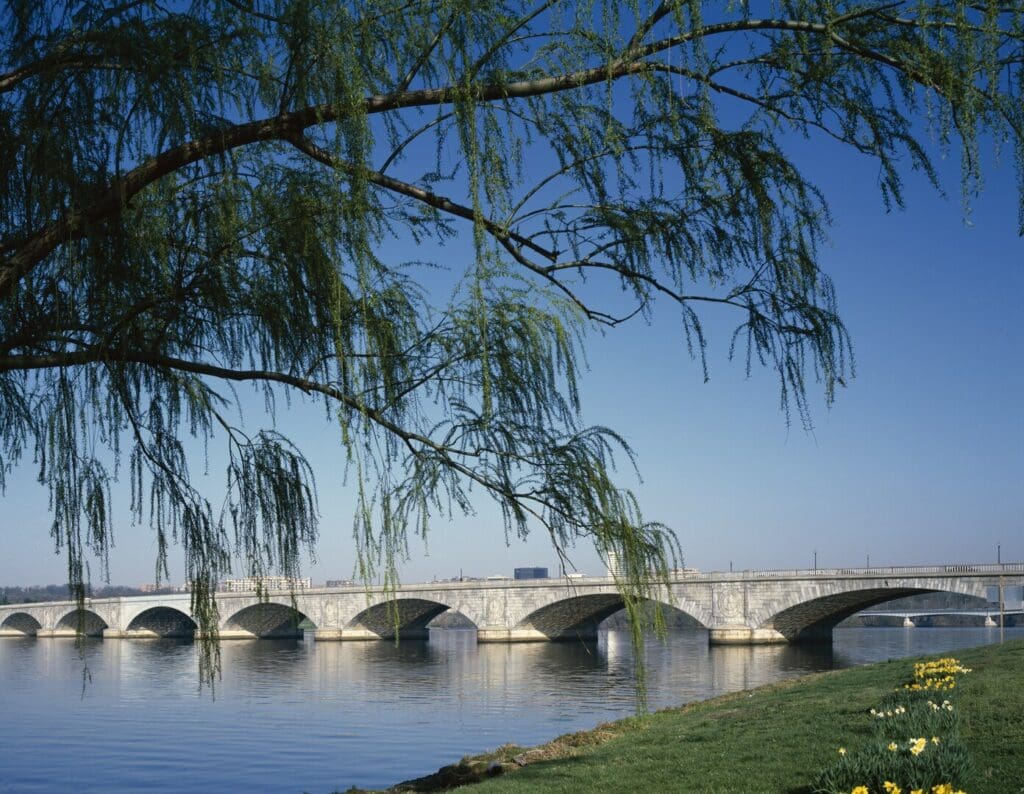
Carol M. Highsmith, Public domain, via Wikimedia Commons
Washington, D.C.’s location along the Potomac River was chosen in part because it would be less susceptible to attack from the sea. When the decision was made to establish the capital of the United States, one of the factors considered was the need for security and defense.
Placing the capital inland along the Potomac River made it less vulnerable to naval attacks by foreign powers. This strategic location was part of the broader plan to ensure the safety and stability of the newly formed nation’s government, especially in the early years following the American Revolution.
45. It has a history of ice skating dating back to the 19th century
Washington, D.C. has a history of ice skating dating back to the 19th century. The city’s winters have often provided opportunities for ice skating on natural ice surfaces, such as the Potomac River and Tidal Basin when they freeze over during cold spells.
In the late 19th and early 20th centuries, ice skating was a popular pastime in the city, and temporary ice rinks were sometimes set up for recreational skating.
Today, there are also several modern indoor ice skating rinks and facilities in the D.C. area, ensuring that the tradition of ice skating continues throughout the winter months.
46. Washington D.C. is home to the world’s largest collection of postage stamps at the National Postal Museum
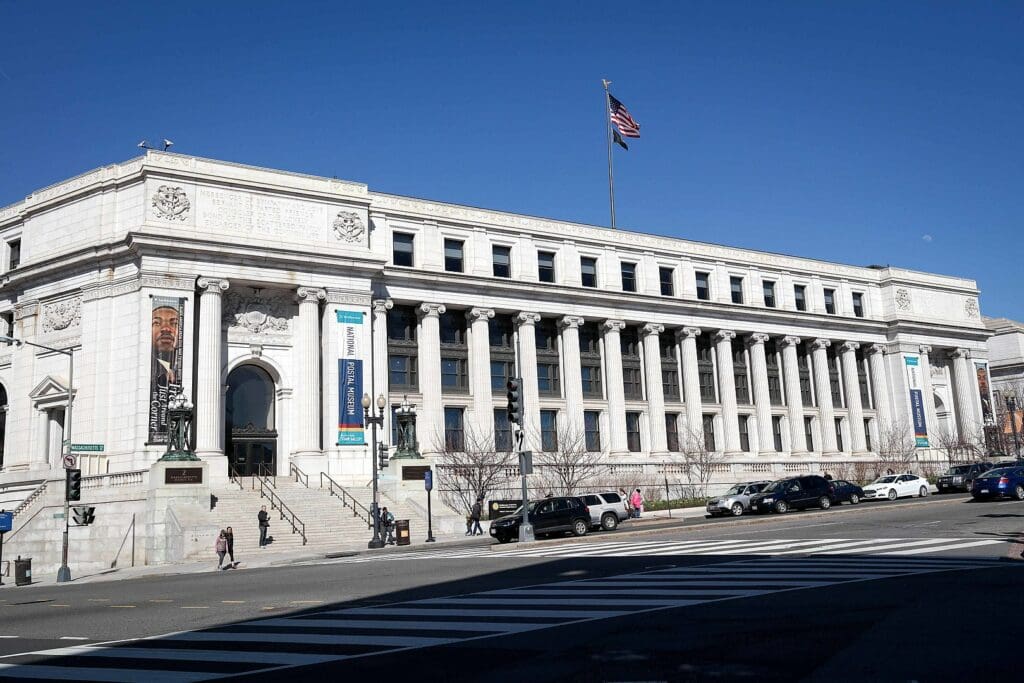
Smash the Iron Cage, CC BY-SA 4.0, via Wikimedia Commons
Washington, D.C. is home to the world’s largest collection of postage stamps at the National Postal Museum. Located within the Smithsonian Institution, this museum showcases the rich history and cultural significance of mail and postage.
Its collection includes over 6 million objects, including stamps, philatelic artifacts, and postal memorabilia. Visitors can explore the evolution of mail delivery, the artistry of stamp design, and the role of postal services in connecting people and nations.
The National Postal Museum offers a fascinating glimpse into the world of philately and the vital role of postal systems in shaping societies and communications worldwide.
47. It has a thriving punk rock history, with legendary venues like the 9:30 Club hosting iconic performances
Washington, D.C. has a thriving punk rock history, and legendary venues like the 9:30 Club have hosted iconic performances. D.C. played a significant role in the punk and hardcore music scenes, particularly in the 1980s.
Bands like Minor Threat, Fugazi, and Bad Brains emerged from this vibrant punk community, known for its DIY ethos and socially conscious lyrics. The 9:30 Club, in particular, has a storied history of hosting punk and alternative rock acts, becoming a landmark venue in the genre.
D.C.’s punk rock legacy continues to influence and inspire musicians and fans around the world.
48. Washington D.C. is home to the International Spy Museum, which offers an interactive look into the world of espionage
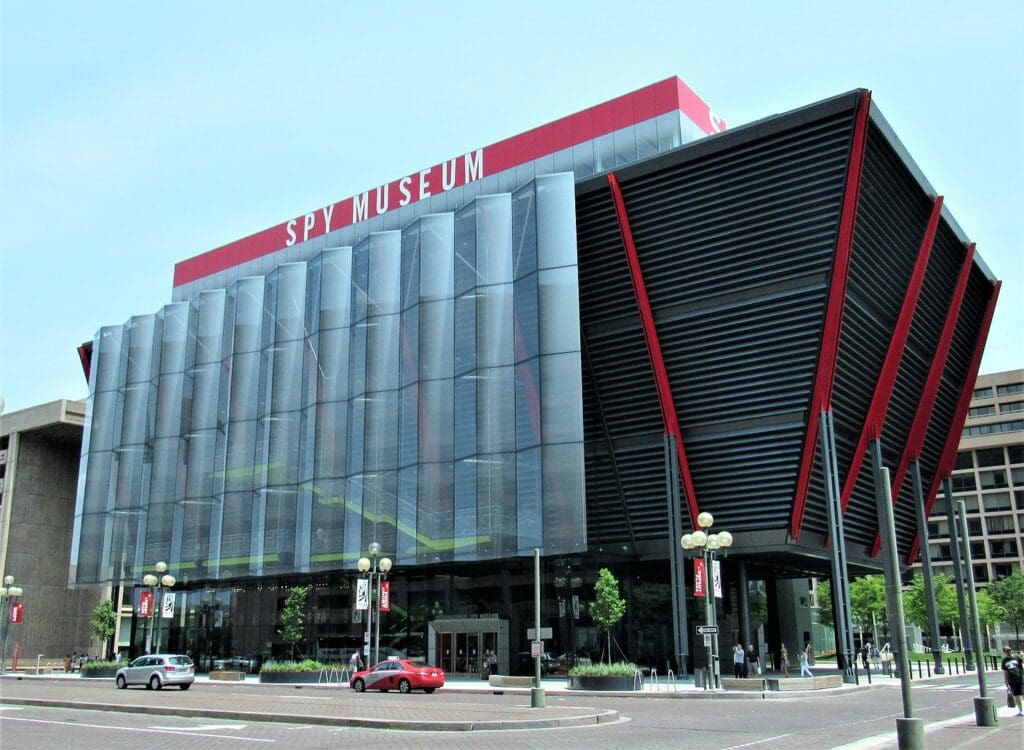
Farragutful, CC BY-SA 4.0, via Wikimedia Commons
The International Spy Museum is located in Washington, D.C. and it is an interactive museum that offers a look into the world of espionage. The museum has a collection of over 900 artifacts, including gadgets, weapons, and documents that have been used by spies throughout history.
It also has interactive exhibits that allow visitors to learn about the different aspects of espionage, such as codebreaking, surveillance, and disguise. The museum is divided into several galleries, each of which focuses on a different aspect of espionage.
The Cold War Gallery, for example, explores the use of espionage during the Cold War, while the Counterintelligence Gallery looks at how governments and organizations try to protect themselves from spies. The museum also has a gallery dedicated to fictional spies, such as James Bond and Mata Hari.
The International Spy Museum is a fascinating and educational experience for people of all ages. It is a great place to learn about the history and techniques of espionage, and it is also a lot of fun. I highly recommend visiting the museum if you are ever in Washington, D.C.
49. Washington D.C. is known for its diverse array of embassies and diplomatic missions
Washington, D.C. is known for its diverse array of embassies and diplomatic missions. The city hosts over 175 foreign embassies, consulates, and international organizations, making it one of the most diplomatic cities in the world.
These diplomatic missions serve as hubs for international relations, fostering political, economic, and cultural ties between nations. D.C.’s Embassy Row, along Massachusetts Avenue, is particularly famous for its stately embassy buildings representing countries from all corners of the globe.
The diplomatic presence in Washington, D.C. not only contributes to the city’s cosmopolitan character but also plays a vital role in shaping global diplomacy and cooperation.
The embassies and consulates in the city serve as a forum for diplomats to meet and discuss important issues, and they also provide a way for foreign governments to represent their interests in the United States.
50. The city’s pet-friendly culture is reflected in its numerous dog parks and pet-friendly restaurants
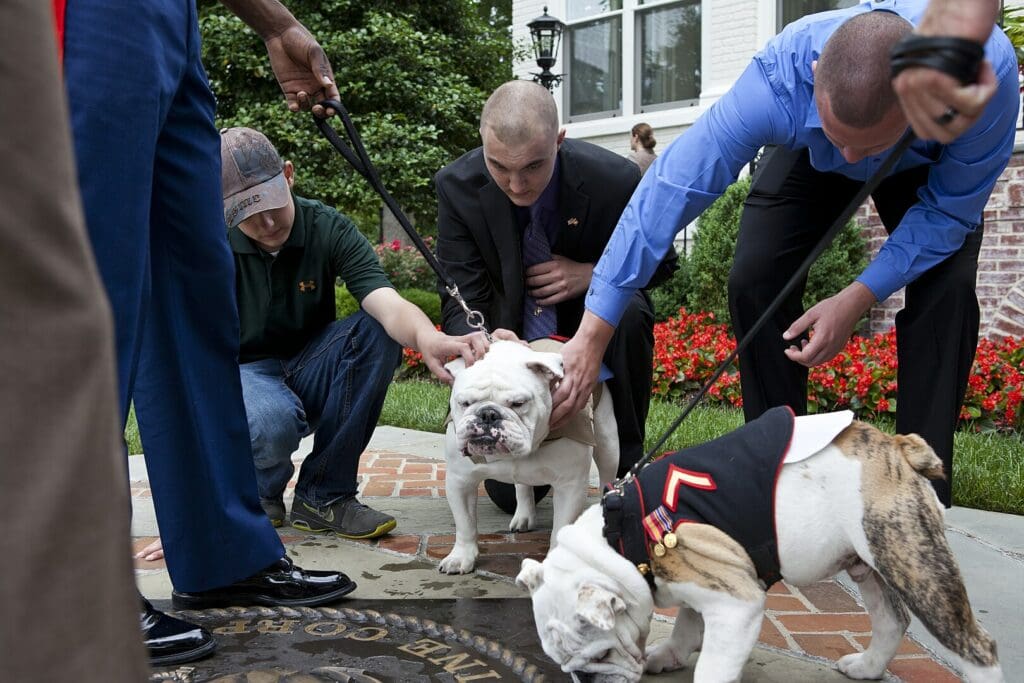
Cpl. Tia Dufour, Public domain, via Wikimedia Commons
Washington, D.C.’s pet-friendly culture is reflected in its numerous dog parks and pet-friendly restaurants. The city takes pride in being welcoming to pets, and you can find a variety of designated dog parks where owners can let their pets exercise and socialize.
Additionally, many restaurants and cafes offer outdoor seating areas where patrons can dine with their dogs. Some establishments even provide special menus or treats for four-legged guests.
This pet-friendly atmosphere enhances the quality of life for residents and visitors who want to enjoy the city with their furry companions, making D.C. a pet-loving destination.
51. It is home to the Washington National Cathedral
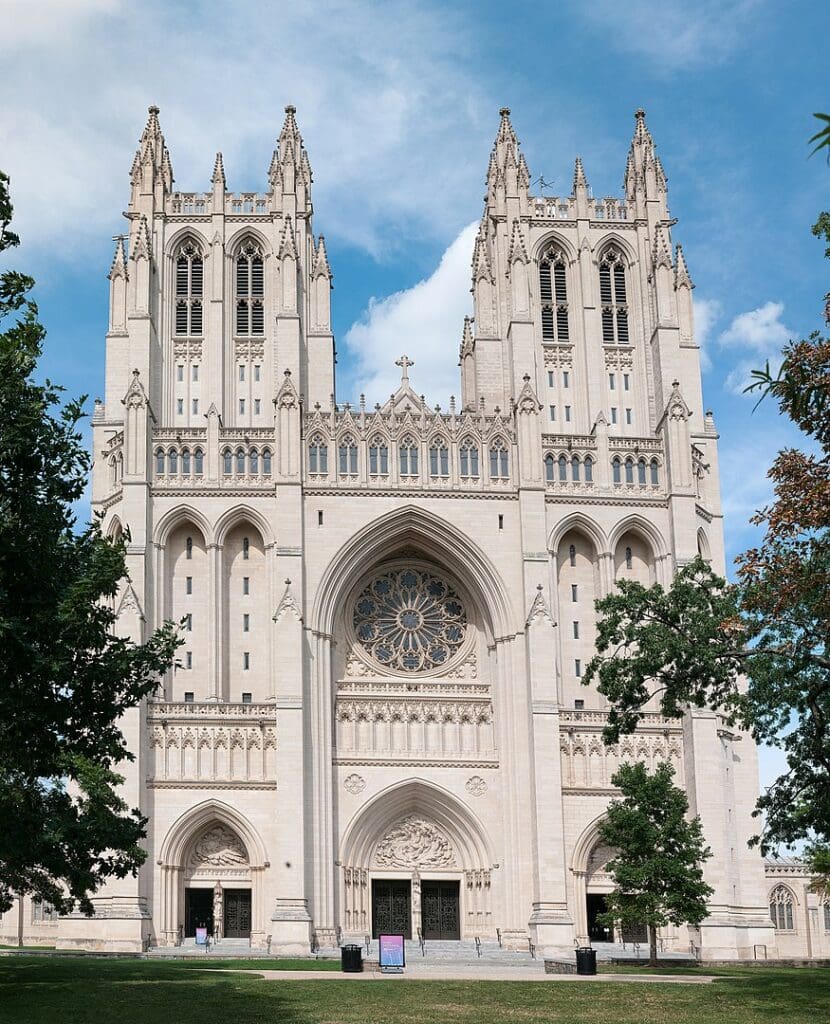
Ralf Roletschek, GFDL 1.2, via Wikimedia Commons
Washington, D.C. is home to the Washington National Cathedral, officially known as the Cathedral Church of Saint Peter and Saint Paul. This iconic cathedral, located in the northwest part of the city, is one of the largest and most recognizable religious landmarks in the United States.
It serves as the national cathedral for the Episcopal Church and hosts a wide range of religious services, events, and cultural programs.
The cathedral is renowned for its stunning Gothic architecture, beautiful stained glass windows, and its role as a place of worship, reflection, and national significance.
52. Washington D.C. is home to the Heurich House Museum
Washington, D.C. is home to the Heurich House Museum. Also known as the Brewmaster’s Castle, this historic house museum was once the residence of Christian Heurich, a prominent German immigrant brewer, and philanthropist.
Located in the Dupont Circle neighborhoodneighborhood, the museum offers visitors a glimpse into the late 19th and early 20th-century life in D.C. The mansion showcases the opulent decor, architecture, and brewing history of the period.
Guided tours highlight the family’s achievements, cultural contributions, and the artistry of the house, making it a unique cultural and historical attraction in the nation’s capital.
53. It is home to the Clara Barton Missing Soldiers Office Museum
Washington, D.C. is home to the Clara Barton Missing Soldiers Office Museum. Located in the heart of the city, this museum preserves and showcases the historic office of Clara Barton, a pioneering nurse and humanitarian who founded the American Red Cross.
During the Civil War, Barton worked tirelessly in this space to locate missing soldiers, offer medical aid, and provide support to their families.
The museum offers visitors a chance to step back in time, explore the meticulously restored office, and learn about Barton’s remarkable contributions to humanitarian work and the establishment of the American Red Cross, making it a significant historical attraction in D.C.
The museum is a small but fascinating place to learn about the history of the American Civil War and the work of Clara Barton. It is a must-see for anyone interested in American history or humanitarian work.
54. The city’s Eastern Market is one of the oldest continually operating public markets in the United States
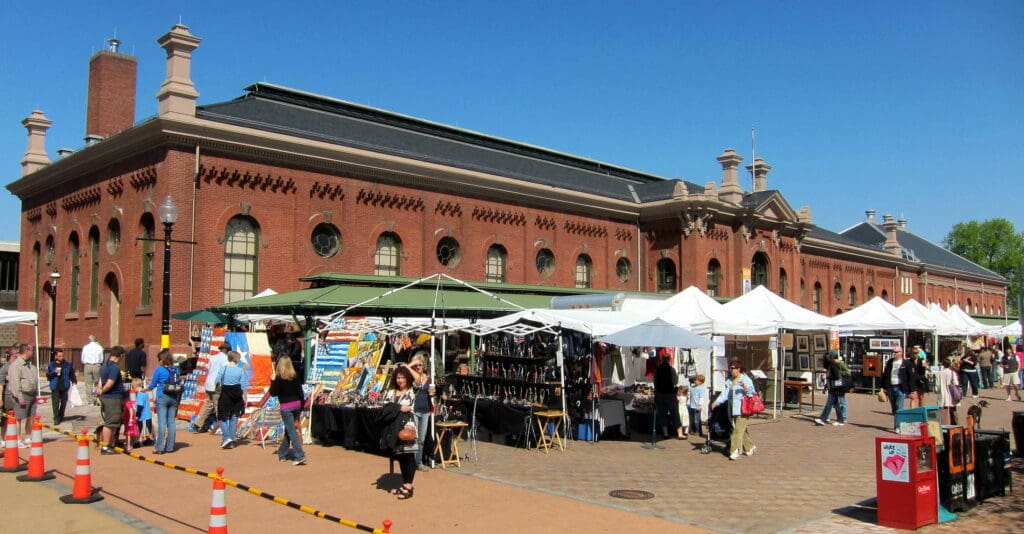
AgnosticPreachersKid, CC BY-SA 3.0, via Wikimedia Commons
Eastern Market is one of the oldest continually operating public markets in the United States. Established in 1805, it has served as a bustling hub for fresh produce, artisanal goods, and community gatherings for over two centuries.
Located in the Capitol Hill neighbourhood, the market features an indoor market hall and an outdoor weekend flea market. It remains a beloved institution where locals and visitors can shop for fresh food, handmade crafts, and unique gifts while savoring the vibrant atmosphere and cultural heritage of the nation’s capital.
The market is a great place to find fresh produce, meats, cheeses, and baked goods. It also has a wide variety of artisanal goods, such as jewelry, pottery, and home decor. The outdoor flea market is a great place to find antiques, collectibles, and unique gifts.
Eastern Market is a popular spot for both locals and tourists. It is a great place to experience the vibrant culture of Washington, D.C., and to find some unique souvenirs to take home.
55. Washington D.C. is home to the Anacostia Community Museum
The Anacostia Community Museum is a Smithsonian Institution museum located in the historic Anacostia neighborhood of Washington, D.C.
It was founded in 1967 and is the first federally funded museum dedicated to the history, culture, and community life of African Americans and other communities of color in the D.C. metropolitan area. The museum engages with the local community and features exhibitions, educational programs, and collections that highlight the stories, achievements, and challenges of these communities.
The museum serves as a valuable resource for understanding and celebrating the diverse cultural heritage of Washington, D.C., and the broader United States.
The museum also offers a variety of educational programs for all ages, including art classes, history workshops, and community events.
The Anacostia Community Museum is a valuable resource for anyone interested in learning about the history and culture of African Americans and other communities of color in Washington, D.C. It is a must-visit for anyone interested in understanding the diversity of the American experience.
From monumental history to vibrant culture, Washington DC’s allure is boundless. As you navigate its iconic streets and absorb its rich heritage, remember that this city’s story is ever-evolving.
Embrace its dynamism, appreciate its significance, and let its spirit inspire your journey through the heart of the nation.
Planning a trip to Paris ? Get ready !
These are Amazon’s best-selling travel products that you may need for coming to Paris.
Bookstore
- The best travel book : Rick Steves – Paris 2023 – Learn more here
- Fodor’s Paris 2024 – Learn more here
Travel Gear
- Venture Pal Lightweight Backpack – Learn more here
- Samsonite Winfield 2 28″ Luggage – Learn more here
- Swig Savvy’s Stainless Steel Insulated Water Bottle – Learn more here
Check Amazon’s best-seller list for the most popular travel accessories. We sometimes read this list just to find out what new travel products people are buying.

